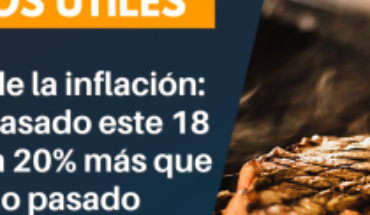Kamikatsu, Japan. – There is no garbage collection in the Japanese village of Kamikatsu. Its 1,500 inhabitants move to the landfill to patiently classify their trash into 45 categories. The ultimate goal is to recycle everything. “Yes, it’s complicated,” admits Naoko Yokoyama, a 39-year-old neighbor, in the middle of a maze of containers and boxes in the sorting center. “But since I moved here a year ago, I pay more attention to the environment.”
The categories range from pillows to toothbrushes, bottles (depending on the type of glass), different containers, metal objects, etc… Located in the mountains 530 kilometers southwest of Tokyo, the village of Kamikatsu aims to recycle everything without sending anything to the incinerators by 2020. Although the employees of the waste center are there to help, it is a great job for these neighbors who have to wash and dry bags, packages and containers to facilitate recycling.
Some objects require dismanting. In one corner, a man uses a hammer to extract the metal pieces from the shelves he brought in. In another, the workers at the sorting center cut a long rubber hose into pieces to keep it in one of the boxes. The site has can and plastic compressors.
To help, a village booklet illustrated with a photograph describing it as “the most beautiful in Japan” features, in 16 double pages, a multitude of photographs and drawings accompanied by a photo of the container or box to be used.
Photo: AFP
Many municipalities in Japan require sorting of waste, but generally in a small number of categories (plastic, cans, paper, etc…), and most household waste is incinerated. Kamikatsu was not highlighted until he received an ultimatum: in 2000 the municipality was ordered to close one of its two incinerators, which did not meet pollution standards. “Then we said to ourselves, if we can’t burn here, let’s recycle,” explains a city official, Midori Suga. “It costs less than incineration.” The village is close to its target, with a recycling rate of 80% of its 286 tonnes of waste produced in 2017, well above the national average of only 20%. In this mountainous country, unfit for landfills, the rest is burned for the time being. If Japan produces less waste per capita than most developed countries, it is a leader in plastic waste per capita, just behind the United States. Until recently, the archipelago exported some of them, especially to China, but Beijing no longer wants Japanese plastic, and it is piling up. The inhabitants of Kamikatsu have no illusions. The system “works because we are only 1,500 people,” explains Yokoyama, from Kyoto.
“Of course, incinerating is easy,” Saeko Takahashi told the AFP by washing milk cartons and tying up his newspapers. “But it’s better to recycle, but waste.” Use a container of fertilizer for leftover meat and fish, and throw the fruit and vegetable peels directly into your garden. “Food lasts longer wrapped in plastic, but there’s no need to multiply the layers,” he said. Kazuyuki Kiyohara, 38, a landfill manager, points out that this material is the one that reaches the landfill the most, and that its consumption has declined little. “Our way of life depends on plastic,” he said. “Consumers can reduce waste to some extent, but we will always have some as long as manufacturers produce plastic objects.” Plastic food boxes that are used massively, the plastic wrapping of bananas or tomatoes, the bags, the spoons or straws distributed everywhere… Japan is far from breaking with this material. In 2018, however, the government announced the target of reducing its annual production of plastic waste by 9.4 million tonnes by 2030. Private companies take initiatives, but according to a timetable that seems to lag far behind the provisions already adopted in other countries, so as not to abruptly hinder suppliers and customers. “We shouldn’t just focus on waste,” says Suga: “We need policies that limit its production.”
Original source in Spanish





